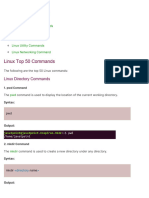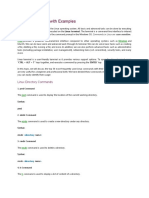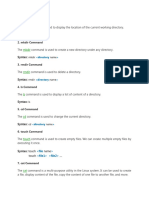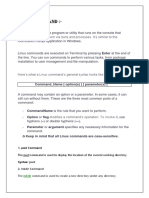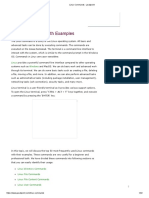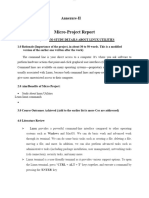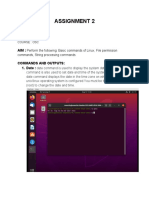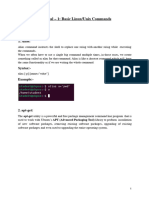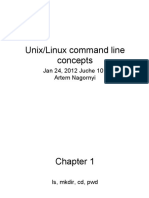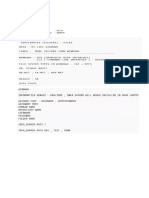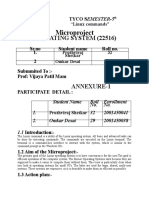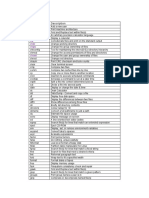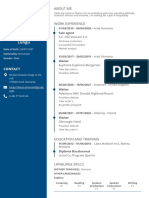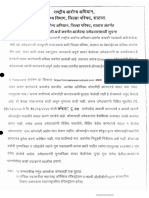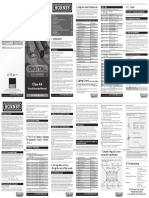0% found this document useful (0 votes)
13 views7 pagesLinux Directory Commands
The document provides a comprehensive overview of various Linux commands categorized into directory, file, user, filter, utility commands, and more. Each command is briefly described along with its usage and syntax. This serves as a useful reference guide for users looking to understand and utilize Linux commands effectively.
Uploaded by
subhojitsaha792Copyright
© © All Rights Reserved
We take content rights seriously. If you suspect this is your content, claim it here.
Available Formats
Download as PDF, TXT or read online on Scribd
0% found this document useful (0 votes)
13 views7 pagesLinux Directory Commands
The document provides a comprehensive overview of various Linux commands categorized into directory, file, user, filter, utility commands, and more. Each command is briefly described along with its usage and syntax. This serves as a useful reference guide for users looking to understand and utilize Linux commands effectively.
Uploaded by
subhojitsaha792Copyright
© © All Rights Reserved
We take content rights seriously. If you suspect this is your content, claim it here.
Available Formats
Download as PDF, TXT or read online on Scribd
/ 7

